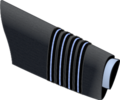The examples and perspective in this deal primarily with the United Kingdom and do not represent a worldwide view of the subject.(February 2024) |
Group captain (Gp Capt or G/C) is a senior officer rank used by some air forces, with origins from the Royal Air Force. [1] The rank is used by air forces of many countries that have historical British influence.
Contents
- Canada
- India
- United Kingdom
- History
- Insignia and command pennant
- Gallery
- Notable group captains
- Honorary
- Fictional characters
- See also
- References
Group captain is immediately senior to wing commander and immediately below air commodore. It is equivalent to the rank of captain in the navy and of colonel in other services.
The equivalent rank in the Women's Auxiliary Air Force, Women's Auxiliary Australian Air Force, Women's Royal Air Force (until 1968) and Princess Mary's Royal Air Force Nursing Service (until 1980) was "group officer".









